Art Fairs
See the 10 Hottest Objects at This Year’s Design Miami/ Basel
From futuristic cars to Sottsass cabinets, here are our picks of the most memorable objects at the design fair—and the backstories that come along with them.
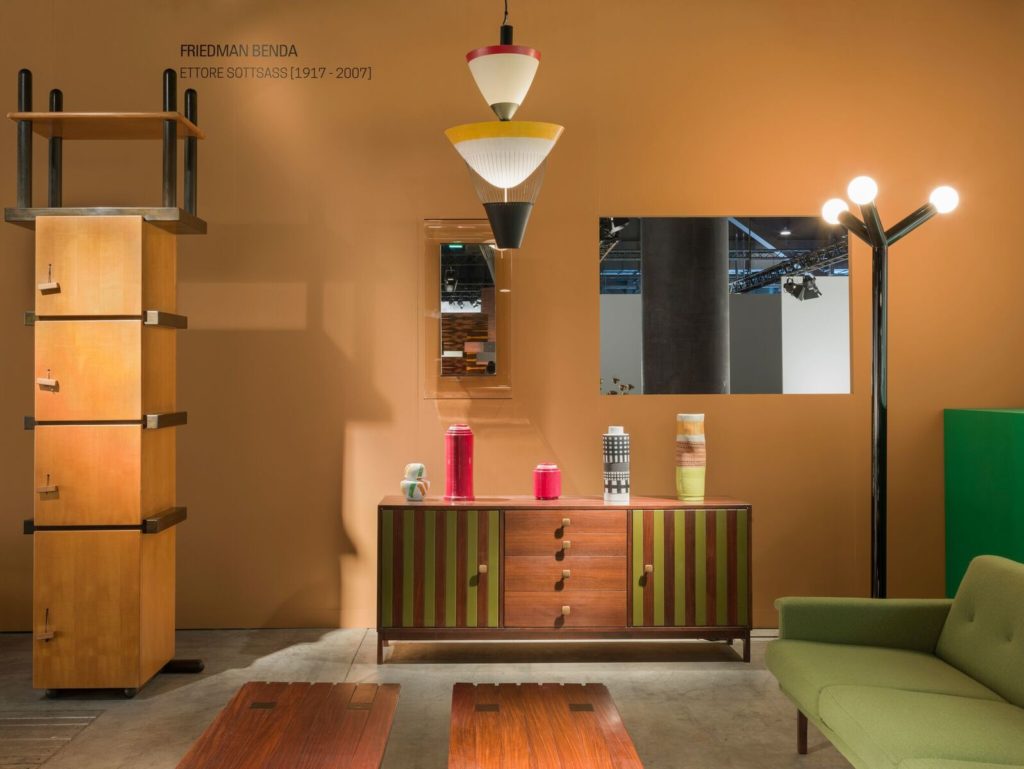
From futuristic cars to Sottsass cabinets, here are our picks of the most memorable objects at the design fair—and the backstories that come along with them.

Julia Halperin

Styrofoam chairs, Art Nouveau vases, and futuristic cars are among the eclectic objects on view at this year’s Design Miami/ Basel, the Swiss outpost of the high-end design fair. With 18 galleries, six of which are new additions, the event—across the street from Art Basel—is an easily digestible snack compared to the seemingly endless feast that is the main fair. Here are our picks of the most memorable objects from this jewel-box affair.
JEAN PROUVÉ
6×9 Demountable House (1944)
Galerie Patrick Seguin (Paris)
This is not the first time the gallery has assembled an entire Prouvé house inside the Messe Basel, but it is the first time it has presented quite so timely a selection—the dwelling takes on new meaning in the midst of the refugee crisis. The modest wood-and-metal house was designed by the French architect to rehouse homeless war victims in Lorraine toward the end of World War I. The gallery’s Laurence Seguin estimates that 150 to 200 such homes were produced as part of an initial order from the Ministry of Reconstruction and Town Planning. “It’s really the beginning of prefab—all the elements were made in a factory,” Seguin says. The houses were designed to take three people just one day to construct—but most have since been destroyed. This version, which was deconstructed in Lorraine, restored, and reassembled before being brought to Basel, costs €1.2 million.
JEAN ROYÈRE
Liane Portemanteau (1966)
Galerie Jacques Lacoste (Paris)
The 20th-century French designer created this one-of-a-kind coat hanger—which extends over a doorway like a Virginia creeper—for a collector’s country home in the 1960s. The hanger remained in the collector’s family until recently. The gallery is presenting it publicly at Design Miami/ for the first time, and sold it for an undisclosed price. The previous owner, mysteriously identified in the gallery’s catalogue as Monsieur B., also commissioned a number of other objects by Royère now on view at the stand, including chairs and chandeliers with a botanical motif. All the works were made late in the designer’s career, as he became interested in re-interpreting his own classic forms in increasingly ambitious ways.
NACHO CARBONELL
Floor Lamp Concrete Base 9 (2016)
Carpenter’s Workshop (Paris, New York, London)
Some design fans might remember Carbonell from Design Miami/ Basel’s 2009 edition, when Brad Pitt bought out his entire presentation of imposing, dreamlike objects. This year, there was no Pitt in sight, but this work still sold for €185,000. Carbonell, based in the Netherlands, created the lamp—whose shade looks like a cross between cotton candy and origami—by constructing a metal mesh, adding paper powder and hardener, and then applying a coating of colored pigment. The bended iron stem grows out of layers of cast concrete.
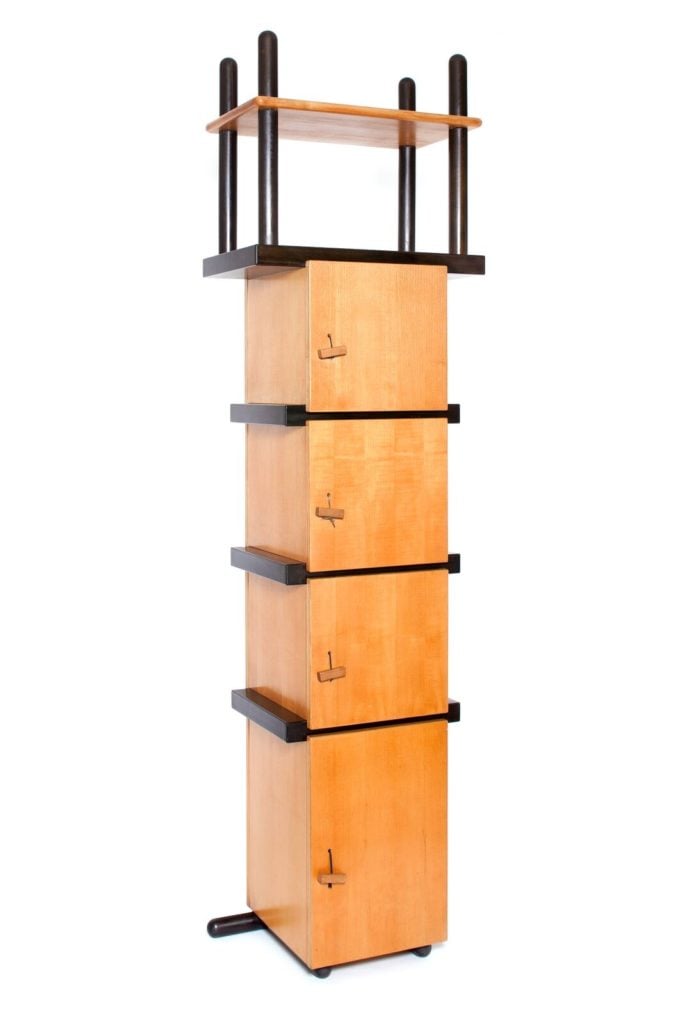
Ettore Sottsass’s Cabinet (1964). Photo courtesy of the gallery.
ETTORE SOTTSASS
Cabinet (1964)
Friedman Benda (New York)
With an exhibition of his glass in Venice and a show opening next month at the Met Breuer in New York, the late Italian maverick designer is having yet another moment. Recent presentations—including Friedman Benda’s solo stand at Design Miami/ Basel this year—offer viewers a taste of the full range of Sottsass’s work. Until recently, he has been primarily associated with Memphis, the movement that launched thousands of odd-angled, laminated design objects in the ’80s (and collected by both Karl Lagerfeld and David Bowie).
In Basel, Friedman Benda presents the designer’s lesser known early and late work, including this unique cabinet, which was acquired by the gallery two years ago and hasn’t been shown or offered for sale since its initial presentation in Milan in 1965. The top of the cabinet is a riff on side tables also designed by Sottsass. “It shows his humor, and his interest in stacking forms,” says the gallery’s director Carole Hochman. “He had a very long life and he never stopped reinventing himself,” adds Marc Benda. The work sold to a European collector for a price in the six figures.
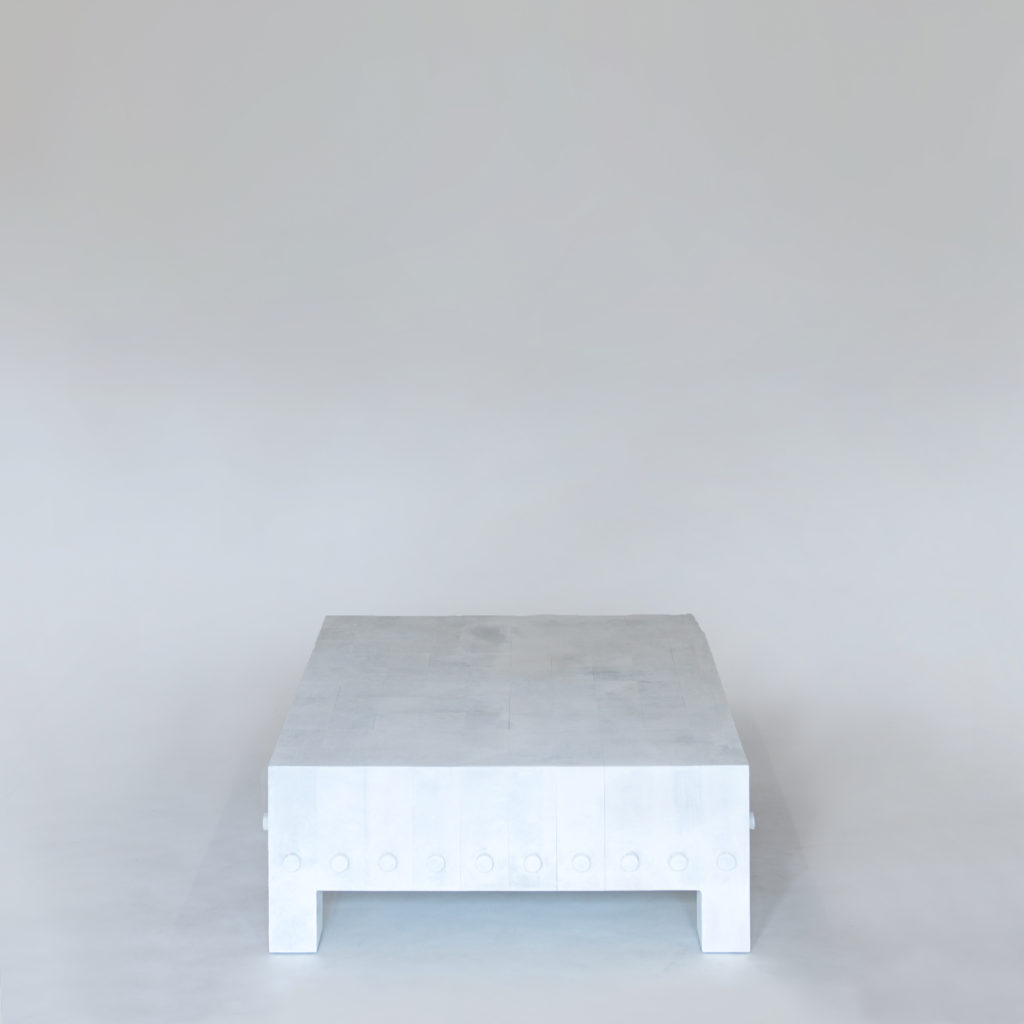
Christ & Gantenbein’s Athens Series table (2017). Photo courtesy the gallery, © Maxime Prananto
CHRIST & GRANTENBEIN
Athens Series (2017)
Maniera (Brussels)
This Brussels gallery specializes in furniture designed by architects. At this year’s fair, it debuts a suite of tables and stools designed by Christ & Gantenbein, the Basel-based architecture firm responsible for the recent hulking addition to the city’s Kunstmuseum. Like that building, this furniture looks solid and deceptively simple. But it is, in fact, a miracle of engineering. The strips of wood are held together with no adhesive at all—only by rods stacked on top of one another that cut through the entire table and are locked into place by wooden ridges. The concept is inspired by wooden chopping blocks that can be found in Athens’s fish markets. By Thursday afternoon, the gallery had sold two low tables from an edition of three at prices ranging from €7,500 to €9,500, as well as “lots and lots of stools,” according to the gallery’s co-founder Amaryllis Jacobs.
GEORGE JOUVE
Sculpture Pince (1952)
Thomas Fritsch (Paris)
This work—whose name translates to “clamp sculpture”—is the centerpiece of the gallery’s presentation of French ceramics from 1945 to 1970. It’s dramatically lit, holy grail-style. Fritsch says the artist kept the ceramic in his personal collection until his death in 1964, after which it was treasured by his wife. The gallery bought it from the artist’s estate last fall, and it is making its public debut at the fair. “We don’t know how many he made, but I’ve only seen five or six different examples over the past 20 years, and this is in perfect condition,” Fritsch says. The piece is coated with enamel that contains traces of lead, which gives it a silver tint. It sold for a six-figure price to a US collector.
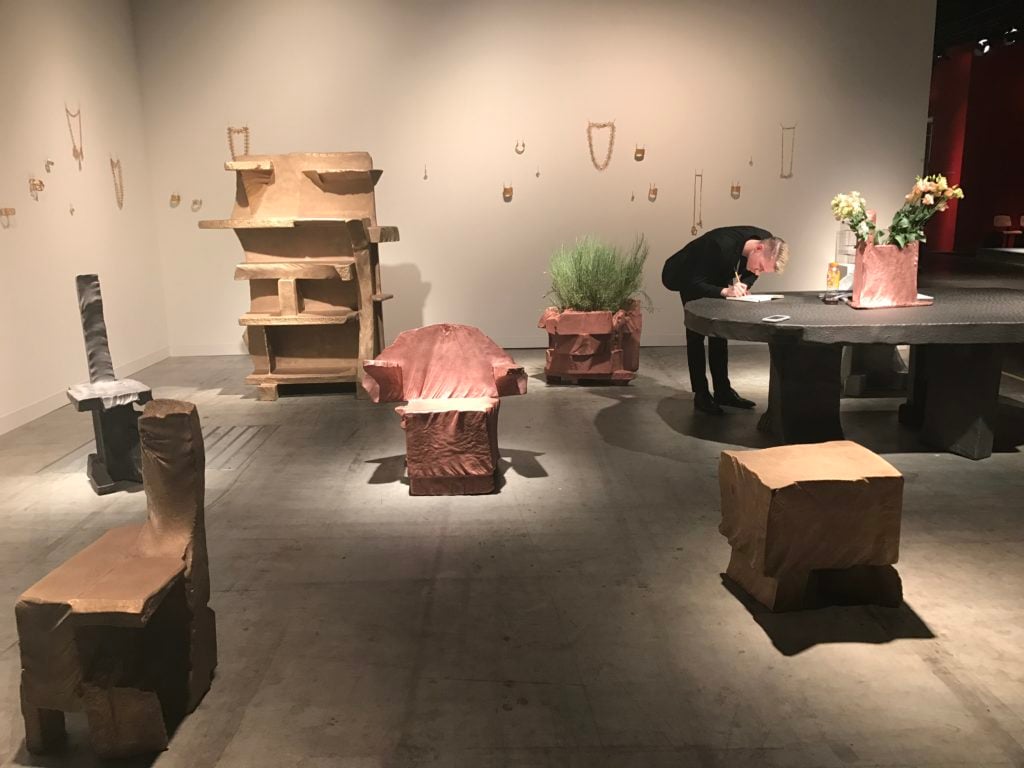
Poly Furniture Series (2016) at Salon 94. Photo by Julia Halperin.
MAX LAMB
Poly Furniture Series (2016)
Salon 94 (New York)
This new series by the young British designer Max Lamb has a secret: although the objects look solid as a rock, they’re actually made of styrofoam. Lamb uses an elaborate gun to spray the works with different liquid metals, including bronze, copper and aluminum. The metallic spray adds a three-millimeter coating to the pieces, making them feel solid—but they remain surprisingly lightweight. The first examples from this body of work debuted at the Madison Avenue flagship of the fashion designer Acne; this is the first time they’ve been available for sale commercially. More than a dozen unique works have sold at prices ranging from $25,000 to $65,000.
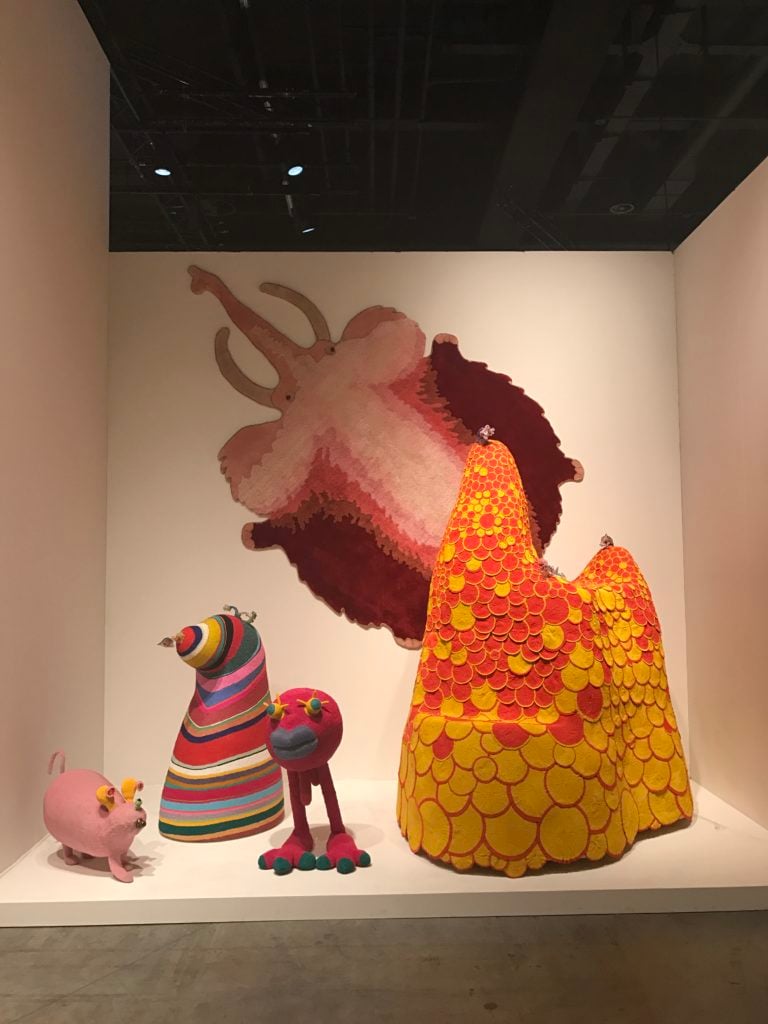
Afreaks Series (2015) at R & Company. Photo by Julia Halperin.
HAAS BROTHERS
Afreaks Series (2015)
R & Company (New York)
This series—with titles as clever as Bill Nyeland and Jack the Lipper—was created in collaboration with a group of women in Cape Town who had previously been employed making beaded tourist curios at much lower pay. The Los Angeles-based brothers began flying back and forth to South Africa to work with them, delivering designs that the craftswomen “would adapt freely,” according to the gallery’s director Whitney Godfrey-Dardik. Each of the elaborately beaded figures takes around a year to produce; many of the modular circular patterns are created by disabled women who are unable to leave their homes. The series, which was recently shown at the Cooper Hewitt Design Triennial in New York, sold out at prices ranging from $70,000 to $250,000 (a portion of which will go back to the women). Another perk of the gig: The brothers flew around 20 of the craftspeople to New York for the series’ debut at the triennial, and also arranged for them to meet Beyoncé there (yes, actually) after hours. (Apparently, they are big fans.)
POUL KJAERHOLM AND DANH VO
Drawing Cabinets (1955/2017)
Galleri Feldt (Copenhagen)
One might be surprised to find work by the Danish artist Danh Vo—who represented Denmark at the Venice Biennale in 2015—at a design fair, rather than at the art fair across the street. But Vo has a keen interest in the sector and has been collaborating with Galleri Feldt for years. When the gallery had the opportunity to acquire these flat file cabinets—which were commissioned from the Danish designer Poul Kjaerholm by the Royal Danish Academy of Fine Arts in Copenhagen in 1955, at a time when he was struggling to get lucrative work—Vo jumped at the chance to do something with them. (Vo attended the school around 50 years later.)
Inspired by the thousands of marks made by students on the cabinets’ surface and notes they’d scratched onto drawers (“Leave this open a little”), Vo made a subtle intervention that references the frustration of the creatively repressed and unsuccessful. He lined the inside of the drawers with 18 identical drawings that read, “All work and no play makes Jack a dull boy,” a reference to the Kubrick film The Shining. “It’s a way of reminding you, if you work too hard, you might go insane,” says the gallery’s Martin Arno Mathiesen. By Thursday afternoon, one of the two cabinets had been purchased for a six-figure sum.
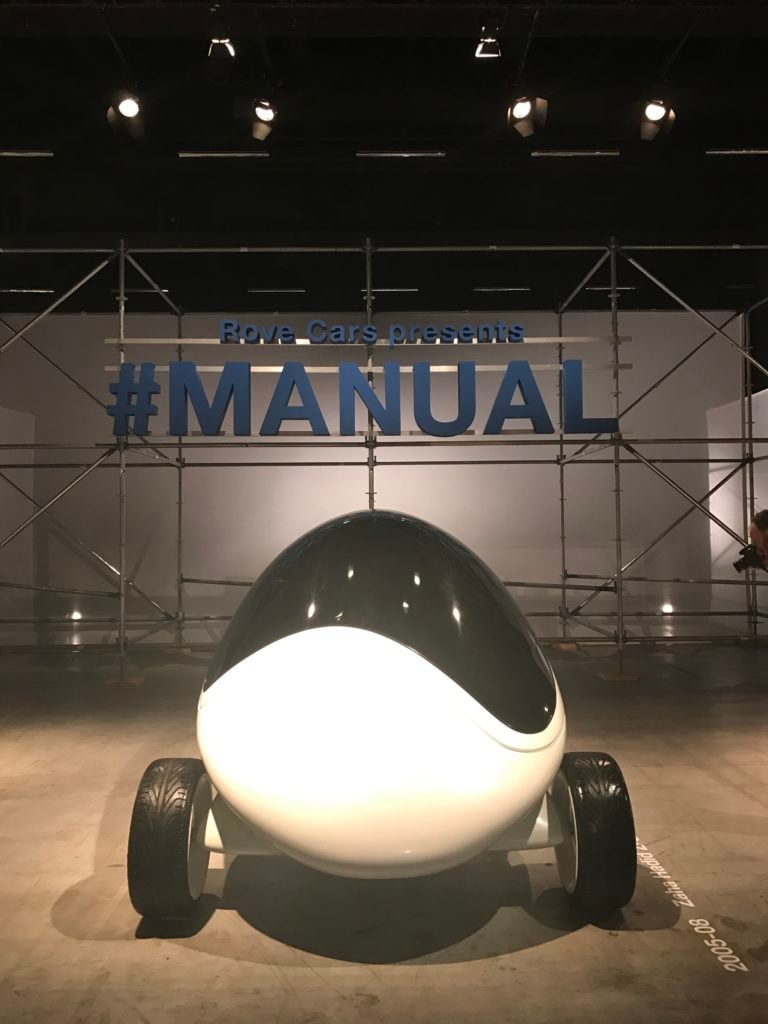
Zaha Hadid’s Z-Car (2007). Photo by Julia Halperin.
ZAHA HADID
Z-Car (2007)
Kenny Schachter
Our own columnist, Kenny Schachter, is presenting a special display of his collection of 13 handmade, quirky cars at the fair. One highlight is a vehicle the late architect Zaha Hadid designed for Schachter, who became a close friend. The car, which looks straight out of Star Wars, is meant to sit upright as it accelerates. The three-wheel design is intended to accommodate the narrow London roads, although this car is merely a conceptual model, not a functioning auto. “For me, it’s about how they look—it’s a non-hierarchical approach to design,” Schachter says. “I see them as works of art.” Hadid made two editions of this car; the other is in the collection of the Philadelphia Museum of Art.